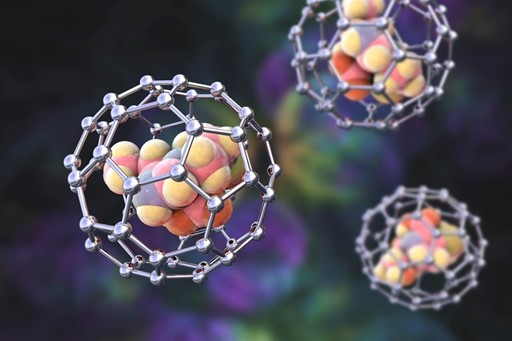The Importance of Particle Shape Characterization –
In this interview, Peter Bouza, the President at Vision Analytical, talks to AZoMaterials about particle characterization and, in particular, the importance of particle shape characterization.
This interview can also be seen on the Azo platform by clicking here
The Importance of Particle Shape Characterization (azom.com)
What is particle characterization?
Particle characterization is the process of measuring various properties of particles, such as size, shape, surface area, or other physical or chemical properties. Characterization is done using a broad range of commercially available techniques that can be used to measure particulate samples. Each has its strengths and limitations, and there is no universally applicable technique for all samples and all situations.

How is particle characterization used?
Initial use of characterization is typically done in the exploratory or research phase of any project involving raw particulate materials. Investigators use particle characterization methods to better understand key properties that can impact the end product or the manufacturing process. As development progresses, particle characterization methods are typically transferred to the manufacturing process, where the control of various parameters is measured to ensure the manufacturability and efficacy of the final product.
Why has particle shape become an important characterization method?
For many years, particle size has been a vital characterization method. Most of the established techniques for particle size characterization are indirect measurement techniques that render particle size information assuming all the measured particles are round. In reality, most particles in the industry are not round, leaving significant doubt on the ability of size-only techniques to offer enough characterization information.
Irregular particle shape can significantly impact how particles interact with each other, how they flow, and how they compact, ultimately affecting the efficacy of products. Because of this, many years ago, scientists embraced and elevated the characterization of particles based on shape and size by using direct measurement techniques such as microscopes. Although slow and tedious, microscopy allows users to obtain qualitative information about their raw materials particles.
When was particle shape first examined?
In 1963, the “Krumbein Scale” was presented for geologists who wanted a standardized way to measure particle roundness and sphericity. This scale was visual with sample images on a sheet of paper to compare particles and was subjective. However, this tells us that for many decades, the need to understand particle shape has been just about as critical as particle size. As time went on, scientists were able to use microscopes to view small sample populations to better understand the shape of their particles.
Why did this field really take off in the 1990s?
It wasn’t until the early 1990s when improved machine vision cameras and higher performing computers were around to start analyzing the shape of particles in a more standardized way with a much higher sampling of particles. Image Analysis, whether the particles are static or dynamically moving, involves very fast image processing.
How did this practice then develop in the particle characterization industry?
Commercial shape analysis systems began to appear on the market in the 1990s and 2000s, as our system did. Although systems such as ours offered particle size as one of the 32+ available shape measures, it was still considered a new technique competing against well-established size-only instrumentation such as laser diffraction. As with any new technique, it took many years of education to let the industry realize that shape analysis systems existed.
Around 2014 we developed one of our systems to work not as a standalone system but as an accessory to other laser diffraction systems in the industry. From this, shape analysis has become known as a complementary method to different size-only techniques. This technique’s high-resolution nature and flexibility have also enabled it to be incorporated into broad application areas such as online particle analysis.
How do scientists use particle shape today, and how is it utilized in industry?
Many scientists and users today know how particle shape instrumentation can be used not only as a characterization but also as an identification tool. Regarding characterization, many use shape analysis to quantify the percentage of different particles in a mixed sample. For example, a user can characterize the percent of excipient to active pharmaceutical ingredients after mixing. They can also then perform the exact measurements before tableting.
A change in the percentage can be catastrophic to an end user and can be identified easily with shape analysis. With this information, the user can make adjustments to minimize the separation of the desired mix caused by particles having different shapes. In terms of identification, particle shape analyzers being a number-based measurement, can identify agglomerated proteins, for example. All tools that enable this are incorporated into the software, and thumbnail images are always available as objective evidence.
Has particle shape analysis now established itself as “standard practice,” or is this still a growing field?
I believe that anyone that is doing material characterization understands particle shape and the importance it plays in their final product. With all the techniques in the market for particle analysis, particle shapes it’s probably the newest technique. This is why it is relatively new but growing at a very fast rate. Over the years, I’ve noticed that particle shape is playing a larger role as a complement to particle size. Particle shape analysis also offers many other benefits due to the nature of the dynamic image analysis technique, which makes it even faster growing. So, although the use of particle shape analyzers is still growing, I feel most scientists that deal with particle characterization know that it exists.
In terms of the analysis of raw materials, what can particle shape tell us?
Some think that particle shape analysis is only the availability of some representative images of the particles you are analyzing. Particle Images serve as good objective evidence of what your particles look like, but the ability to make over 32 different shape calculations of every particle, as well as measuring concentration, awards us with the ability to use this information to identify issues where size-only instruments cant. I have seen numerous instances where differences in shape, not size, were used to identify different lots of raw materials. Particle thumbnails help users to detect and identify large particles as either bubbles, agglomerates, or contamination.
What characteristics are you on the lookout for when you analyze particle shape?
Dynamic image analysis is a number-based technique. This means that it measures particles individually. There are a few other techniques in the industry that are also number based and are very suitable to give individual particle information as well as count and concentration information which is very important to many industries. In addition, dynamic image analysis is a direct measurement technique. This means that measurements are being made of the actual particle.
Highly popular indirect measurement techniques measure some phenomena that are related to particle size. Indirect measurement techniques will always report particle size assuming the particles are round in shape. This is yet another reason why dynamic image analysis is gaining popularity. The ability to measure and detect individual particles and give you dozens of shape measurements for every particle, including size, are two reasons why dynamic image analysis and particle shape are becoming more and more popular. The vast amount of data obtained for each particle is then used to classify particles and do further post analysis processing.
How will particle shape analysis and the technology it depends on change in the future?
We here at Vision Analytical spend every day improving our line of image analysis products. We are in the constant fight against physics to find faster and better ways of detecting, analyzing, and processing information that gives the end-user more information without having to guess. As we have seen since our start, we feel that the future holds many improvements in technology. As technology improves, we are immediate and laser-focused on taking advantage of these improvements and implementing them in our products, offering continuous improvements to the industry.
How will these changes impact the use of particle shape analysis in material characterization?
Continuous incorporation of technological improvements will enable particle shape analyzers to have a broader scope of applications. We have systems that are bench-top in nature, but we also have systems that are portable, and many are now online, offering immediate feedback on raw material process issues. Harnessing these technological improvements will enable us to expand the reach particle shape has into numerous other industries.
What particle shape analysis systems are currently available, and how do these differ from one another?
Particle Shape instrumentation uses Image Analysis and is either Static or Dynamic in operation. Static systems are automated microscopes that offer very good image quality but take significant time to get representative results of many particles. Dynamic Image Analysis systems enable the analysis of particles while in motion enabling the characterization of tens of thousands of particles in minutes, giving statistically representative results in a short time.
It also allows detecting and characterizing rare events such as agglomerates or low quantity contamination with thumbnail images as objective evidence. Dynamic image analyzers are also flexible enough to be added as a complementary method to other measurement techniques. Many laser diffraction particle size analyzers have added dynamic image analysis as a complementary method to its size-only results.
What do users look for while selecting a particle shape analysis system?
Users looking for particle shape systems typically understand particle size but feel they are missing some key information that’s having an impact on their final product.
These users are looking for more information and tools to make critical decisions based on shape, not just size. Particle images alone are not enough. Having worked over 16 years in improving our product offering, we have seen how critical it is to offer customers tools to compare and contrast different materials and lots not just based on size but on numerous measured shape parameters. Size-only instruments give one shape parameter, that being size. Image analysis systems provide over 32 shape parameters.
It is not the user’s responsibility to figure out how to use these 32 shape parameters. It is the responsibility of the instrument manufacturer to develop tools that take advantage of all of this information and offer tools such as particle classification, particle correlation, particle concentration, shape overlays, and many more. High-quality images are always important, but post-run-processing tools create the most significant value in shape analysis.
Where can readers find more information?
Our website, www.ParticleShape.com, is a great resource for technical and application information, including blogs where most of our application notes are located.
About Vision Analytical
Vision Analytical, located in Miami, Florida, USA, was established in 2007 and is focused on using Dynamic Image Analysis as its core technique to develop instrumentation and software to assist numerous industries in their characterization methods. Numerous versions of the “Insight” product line have been developed for specific uses where size, shape, and concentration are critical particle characterization parameters to monitor.






